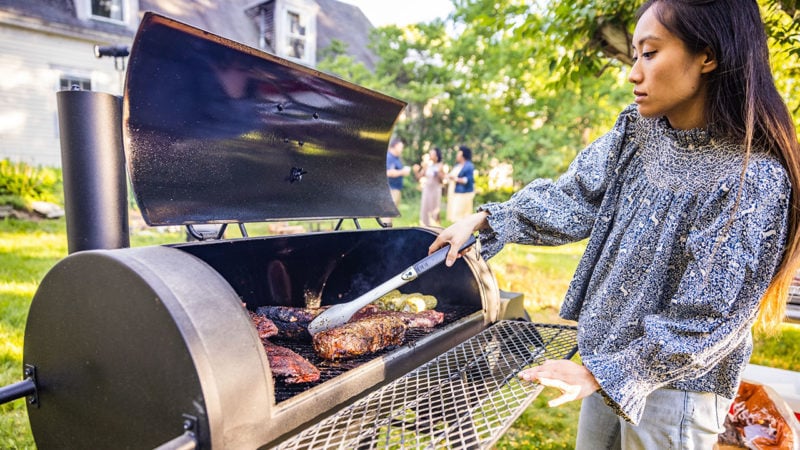Last Updated on January 21, 2022
Being competent in the kitchen starts with understanding the fundamentals. These essential cooking methods are the everyday tools of chefs around the world, and when done right, can produce amazing flavors with minimal effort. From roasting and broiling to grilling and pan-searing, start your home-chef journey with these tips, tricks, and easy recipes.
Roasting
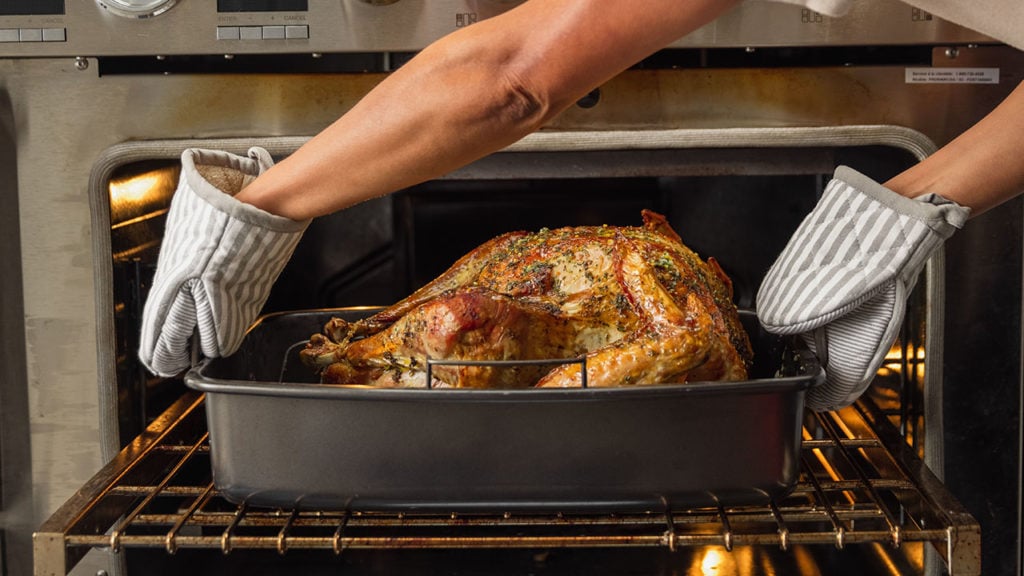
Roasting cooks food by surrounding it with hot, dry air on all sides. Commonly, this is done in an oven—but you can also roast foods on the stovetop or in a slow cooker.
Roasting is a common technique for thicker pieces of meat that take longer to cook all the way through, and roasting temperatures may vary. Common meat choices for roasting are thicker cuts like a bottom round roast, and bone-in cuts like pork chops that require more sustained time and heat to reach the inner parts of the meat. For a more detailed look, check out this Guide to Roasting.
Grilling
Grilling is cooking on a wire rack over open flames or coals. You can grill over a campfire, but most grilling these days happens on propane or charcoal grills, which allow for more constant and consistent heat. The direct heat sears the outside of the food, often producing those coveted lines called grill-marks, and can produce delicious smoky, charcoal flavors.
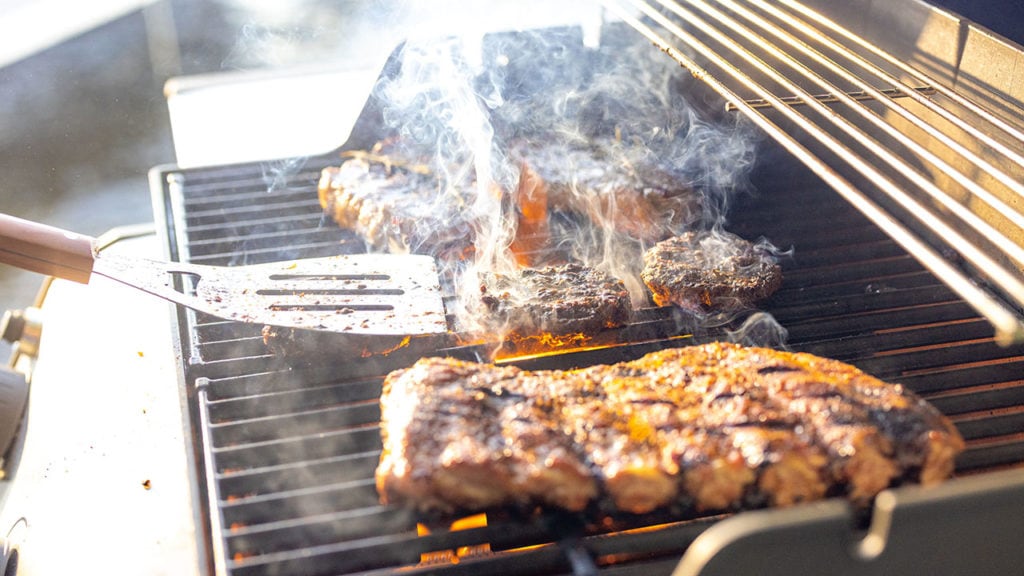
A few tips—starting the heat at high can sear the meat, producing a delicious crispy, crusty exterior. But don’t be afraid to lower the temperature once you’ve seared. If you constantly cook at just high heat, there’s a good chance you’ll have food that is overdone and burnt. And be wary; thinner cuts will cook through much faster than you might think. Check out this Guide to Grilling Steak, and for starters, these recipes for grilled flank steak and grilled pork chops.
Pan Searing
Pan searing is perfect for producing that crispy, brown crust. It’s done on a stove over high heat, or in a cast-iron pan on the grill. Start with placing some form of fat, like butter or oil, in the pan. The key is to put the meat in the pan when the fat is hot but not burning and let the meat sizzle, flipping it in turn so you cook each side in turn.
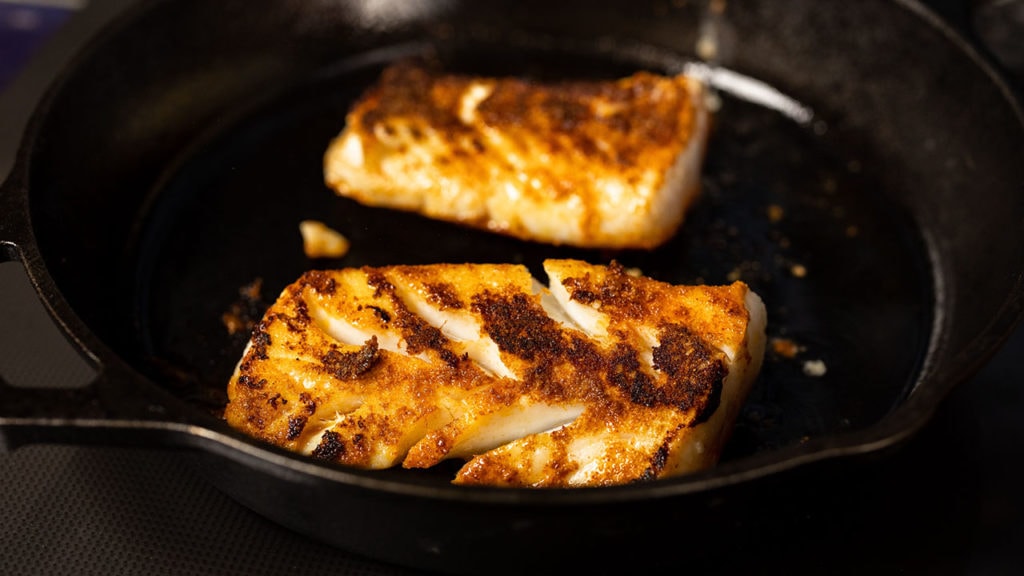
Searing doesn’t take long, sometimes as little as a minute or two. If your protein is thin, like a ribeye or scallops, you can cook the meat all the way through with this method, and be ready to serve minutes after you started. Other recipes, like pork tenderloin, might start with a pan-searing, and then finish by roasting in the oven.
Sautéing
Sautéing is also done in a pan, but unlike searing, it is done over medium-high heat, and the food is moved around in the pan, either by shifting the pan back and forth or stirring and flipping with a wooden spatula. Sometimes, you may see the word pan-fry, which is synonymous in American Cuisine with sautéing.
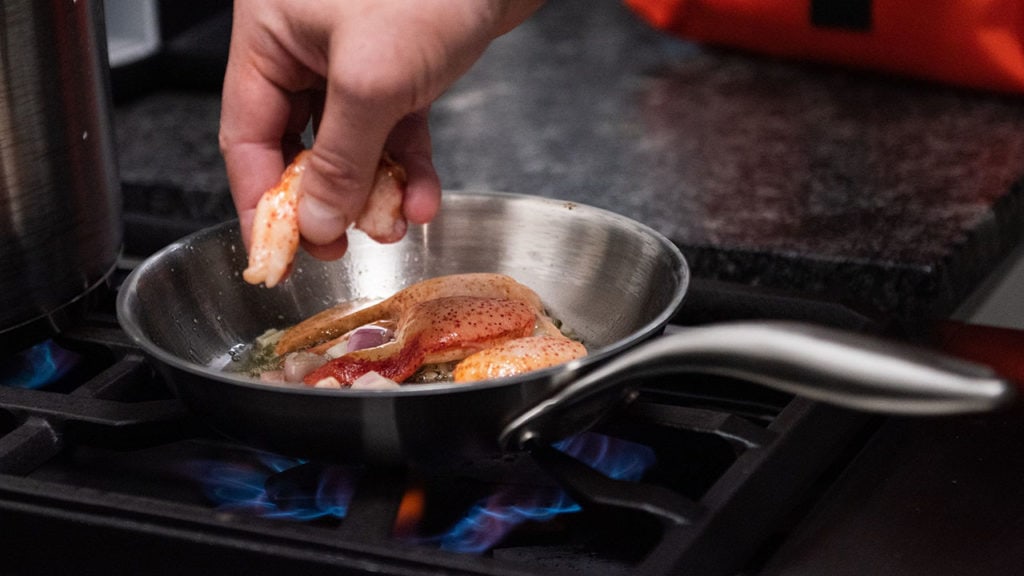
Good tips for sautéing—use just a small amount of fat, enough to coat the bottom of the pan. And while stirring and shifting the food is part of the process, it can be overdone, which can lead to a burnt, brown crust on the bottom of the pan. For meat, like delicious brown butter lobster tails, it’s important to sauté until the meat is cooked all the way through. And for vegetables, like sautéed green beans, the goal is to be cooked, but not so much that you lose that delicious crunch!
Steaming
Cooking with steam is a common, and sometimes tricky, method. It’s important that your food is not immersed in water (boiling), but rather held above boiling water, so it is cooked with the steam. This is often done with a collapsible pot, which you place above a pot of boiling water, and cover. Once the water is boiling, reduce the heat to a simmer, and cook in the steam. This is a great option for vegetables like broccoli, or for seafood, like salmon or mussels.
Poaching
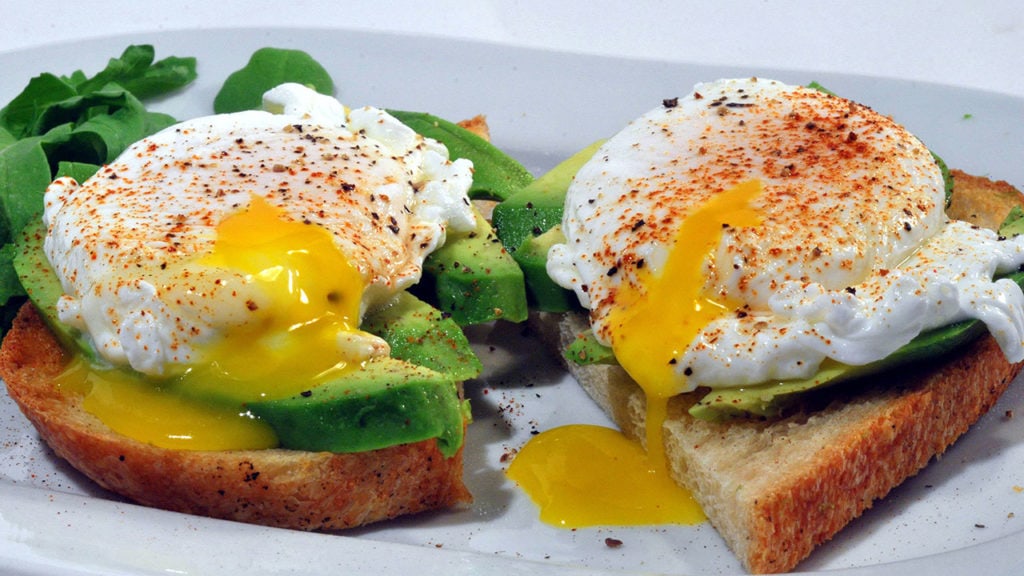
For many home chefs, poaching—which is cooking food in hot, not-quite-boiling liquid—may feel intimidating. But it’s not as tricky as it seems, and it’s quite versatile. While many recipes, like poached eggs, may call for poaching in water, food can be poached in a variety of different liquids—including wine, milk, as well as various stocks and broths—to produce rich depths of flavor.
Poaching is often used with proteins like eggs, fish, and chicken, and on a variety of vegetables. Pay attention to the recipes you’re using while poaching, as each recipe will call for slightly different techniques, like varying the depth of the hot liquid, adding vinegar or salt to the liquid, or sometimes even creating a slow whirlpool in the liquid. For an intro to poaching, try these lemon-poached salmon and butter-poached lobster recipes.
Broiling
Broiling is a quick method of cooking, exposing food to high, dry heat. Most ovens have a broil setting, which uses high heat around 500°F to 550°F from the top of the oven’s heating element.
Because of the extreme heat, be wary to leave food broiling for too long! Broiling is a method sometimes used to finish foods, as the high heat will produce a delicious, crispy crust, similar to what you might get by searing. Cooks will broil a variety of different foods, from bread and baked goods to burgers and chicken breasts.
Baking
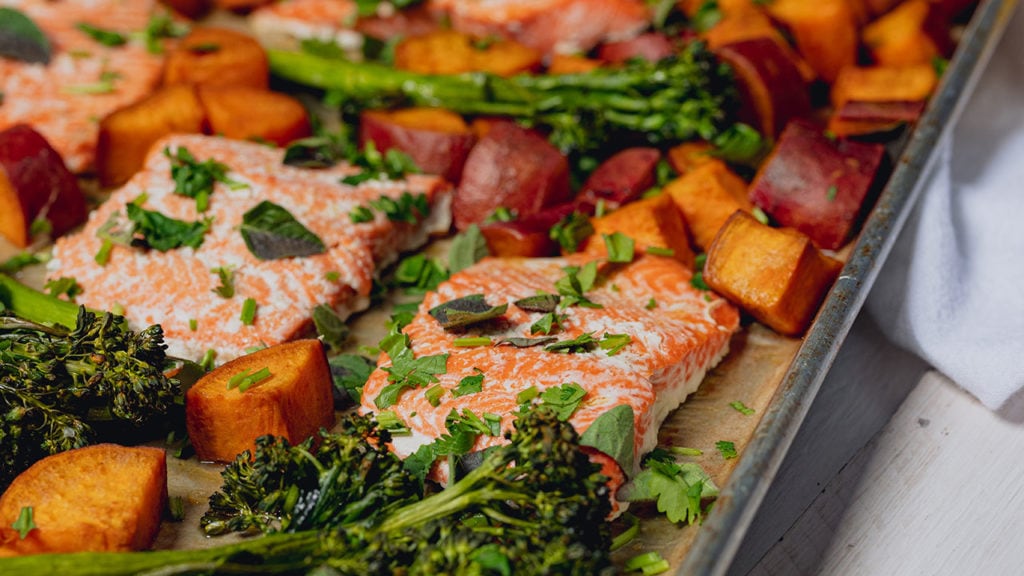
Baking is one of the most common types of cooking. Like roasting, baking is cooking with dry, indirect heat, without exposure to open flames, and usually done in an oven. The difference is that baking usually occurs at lower temperatures, 375°F and below, and often involves foods that are not solid when they go into the oven, like cakes or breads. However, certain more delicate proteins, like cod, chicken breasts, or stuffed pork chops, can be baked rather than roasted to prevent drying.
Pressure Cooking
Pressure cooking has become very popular, and for three main reasons: It is simple, it is incredibly, fast, and it doesn’t compromise on flavor. Pressure cooking is done inside a special pressure cooking device, like the Instant Pot, and it cooks through the principle of steam pressure. Steam pressure increases the boiling temperature of water inside the contained pressure cooker, and the pressure forces moisture quickly into the food, which increases the cooking time, and enhances the tenderness.
Pressure cooking is low maintenance and extremely quick—letting you cook chicken wings from frozen in just 15 minutes—and it works well for a variety of foods, from meat and seafood to vegetables and soups.
Braising
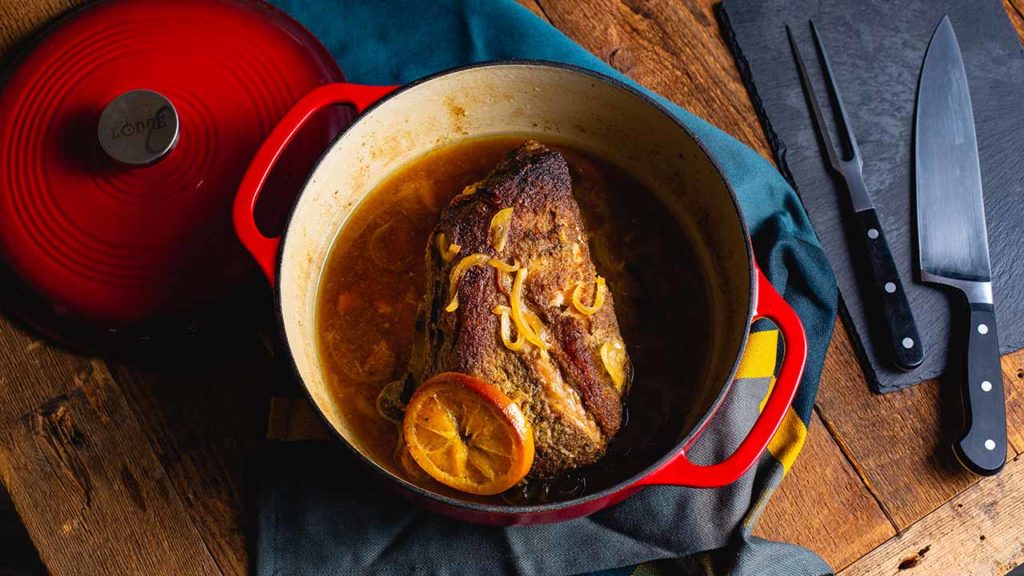
Braising is combination cooking—two cooking methods packed into one. You start by browning, or pan-searing at a high temperature, and then slow cooking in liquid in a covered pot, like a Dutch oven. Braising, a form of moist cooking, is often down to create rich, deep flavors and produce a soft, tender texture. Meats and vegetables can be braised in broth, wine, beer, and a variety of different flavor-adding cooking liquids to enhance natural flavors. Common cuts to braise would be a thick, rich eye round, or a tender, juicy braised brisket.
Many of ButcherBox’s larger pork cuts are also perfect for braising. Try using Samin Nosrat’s well-known and easy-to-follow Braised Pork with Chiles recipe or our own tips for braising, How To Braise Pork.
Frying
Frying—which is cooking food in hot fats or oils—is broken up into three different methods: Deep frying, pan-frying, and stir-frying. Deep frying involves full submersion of food in the hot oil, like with French fries or deep frying a Thanksgiving turkey. Pan-frying is done in a shallow pan, and usually only a portion of the food is submerged in the hot oil. Stir-frying is often done in a sloped, oiled pan, like a wok, and the food is constantly stirred while cooking. Fried food is characterized by a crispy, crunchy exterior and warm, tender center, like we often see on fried chicken, fish and chips, and these delicious lobster and scallion fritters.

